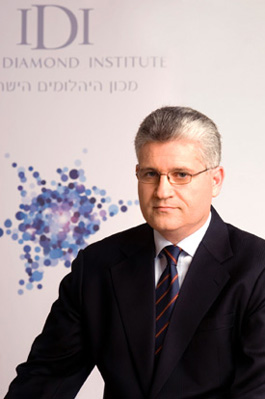Corporate Social Responsibility strategies for the jewellery industry
Eli Avidar
Managing Director of the Israel Diamond Institute Group of Companies (IDI)..
Earlier this year, I was asked by CIBJO President Gaetano Cavalieri to serve on the CIBJO board of directors, in my capacity as Managing Director of the Israel Diamond Institute Group of Companies (IDI), which is the umbrella organization of the Israeli Diamond Industry.
As a former civil servant who has served for many years as a diplomat in Israel’s Foreign Office, it was not very difficult to make the transition into yet another role where diplomacy plays an important role. Since my introduction into the international diamond, gem and jewelry industry and trade 4 years ago, I’ve come to appreciate CIBJO as one of the organizations with the largest potential.
I say ‘potential’ because I genuinely think that CIBJO has only begun to scratch the surface of what it really can achieve. Pulled out of relative obscurity by President Cavalieri just after the turn of the 21st century, CIBJO is now the unrivalled umbrella organization that represents the interests of an industry with an annual turnover of almost half a trillion dollars in retail sales. However, with the industry under great pressure from rivaling luxury industry products and with its own products under severe scrutiny of NGO’s and the consumers, there is a lot to be done.
Fortunately, under the guidance of Dr. Cavalieri, CIBJO achieved consultative status at the United Nations, in particular in the UN Economic and Social Council (ECOSOC). Next, CIBJO was instrumental in the creation and establishment of the gem and jewelry industry’s very first Center of Excellence for education in corporate social responsibility. Built of financial and physical foundations provided by the United Nations Institute of Training and Research (UNITAR), the government of Flanders and the City of Antwerp, this center of excellence will enable CIBJO and its members to access CSR education.
Though the aforementioned achievements are impressive, I wonder if there is more ‘potential’ we could shed light on. It is common knowledge that in some major markets – particularly North America and Europe – the jewelry retail market has been losing market share, mainly due to competition with other luxury products, but also due to loss of consumer confidence.
Obviously, there is a lot of room to improve the industry’s marketing efforts and this is yet one of the fields where CIBJO members need help. My organization, IDI, has been very successful with its recent marketing campaigns “Together Works,” “Responsibility is Good Business” and “Welcome to Israel,” aimed at improving Israel’s diamond sales to the traditional markets in the Western world and the – now leading – markets in Asia. The IDI campaign is founded on the efforts to build strategic alliances between diamond vendors and their downstream clients, the jewelry manufacturing and retailing business communities.
I think that one of the next challenges CIBJO needs to take on is the creation of a set of marketing tools that can be used by CIBJO’s members and their own retail members. By tapping into the enormous resources available through the collective knowledge of CIBJO’s members, each and every member can contribute to this effort. I look forward to being part of such a cooperative effort.




